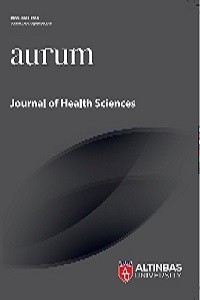Selective Retreatment of a Three-Canalled Mandibular Premolar using Cone Beam Computed Tomography: 5-Year Follow-up
Selective Retreatment of a Three-Canalled Mandibular Premolar using Cone Beam Computed Tomography: 5-Year Follow-up
___
- Aguiar, C., Mendes, D., Camara, A., Figueiredo, J. (2010). Endodontic treatment of a mandibular second premolar with three root canals. J Contemp Dent Pract, 11(2), 078-084.
- Barnett, F., Abbott, J., Hartwell, G. (2011). Cone beam-computed tomography in endodontics. Endodontics: colleagues for excellence. Chicago: American Association of Endodontists, 1-7.
- Bram, S. M., Fleisher, R. (1991). Endodontic therapy in a mandibular second bicuspid with four canals. J Endod, 17(10), 513-515.
- Chan, K., Yew, S. C., Chao, S. Y. (1992). Mandibular premolar with three root canals--two case reports. Int Endod J, 25(5), 261-264.
- Cleghorn, B. M., Christie, W. H., Dong, C. C. (2008). Anomalous mandibular premolars: a mandibular first premolar with three roots and a mandibular second premolar with a C-shaped canal system. Int Endod J, 41(11), 1005-1014.
- Davis, S., Gluskin, A. H., Livingood, P. M., Chambers, D. W. (2010). Analysis of temperature rise and the use of coolants in the dissipation of ultrasonic heat build-up during post removal. J Endod, 36(11), 1892-1896.
- Friedman, S., Abitbol, S., Lawrence, H. P. (2003). Treatment outcome in endodontics: the Toronto Study. Phase 1: initial treatment. J Endod, 29(12), 787-793.
- Friedman, S., Mor, C. (2004). The success of endodontic therapy--healing and functionality. J Calif Dent Assoc, 32(6), 493-503.
- Lotfi, M., Vosoughhosseini, S., Zand, V., Fatemi, A., Shyezadeh, V., Ranjkesh, B. (2008). A mandibular second premolar with three canals and atypical orifices. J Oral Sci, 50(3), 363-366.
- Maggiore, F., Jou, Y. T., Kim, S. (2002). A six-canal maxillary first molar: case report. Int Endod J, 35(5), 486-491.
- Nair, P. N. (1999). Cholesterol as an aetiological agent in endodontic failures--a review. Aust Endod J, 25(1), 19-26.
- Nair, P. N. (2006). On the causes of persistent apical periodontitis: a review. Int Endod J, 39(4), 249-281.
- Nair. P. N., Sjogren, U., Krey, G., Sundqvist, G. (1990). Therapy-resistant foreign body giant cell granuloma at the periapex of a root-filled human tooth. J Endod, 16(12), 589-595.
- Nudera, W. J. (2015). Selective root retreatment: a novel approach. J Endod, 41(8), 1382-1388.
- Parekh, V., Shah, N., Joshi, H. (2011). Root canal morphology and variations of mandibular premolars by clearing technique: an in vitro study. J Contemp Dent Pract, 12(4), 318-321.
- Patel, S. (2009). New dimensions in endodontic imaging: part 2. Cone beam computed tomography. Int Endod J, 42(6), 463-475.
- Peters, O. A., Barbakow, F., Peters, C. I. (2004). An analysis of endodontic treatment with three nickeltitanium rotary root canal preparation techniques. Int Endod J, 37(12), 849-859.
- Poorni, S., Karumaran, C. S., Indira, R. (2010) Mandibular first premolar with two roots and three canals. Aust Endod J, 36(1), 32-34.
- Prakash, R., Nandini, S., Ballal, S., Kumar, S. N., Kandaswamy, D. (2008). Two-rooted mandibular second premolars: case report and survey. Indian J Dent Res, 19(1), 70-73.
- Ramachandran Nair, P. N., Pajarola, G., Schroeder, H. E. (1996). Types and incidence of human periapical lesions obtained with extracted teeth. Oral Surg Oral Med Oral Pathol Oral Radiol Endod, 81(1), 93-102. Doi: 10.1016/s1079-2104(96)80156-9
- Roda, R. S. (2006). Nonsurgical retreatment. Pathways of the Pulp, 944-1010.
- Schilder, H. (1967). Filling root canals in three dimensions. Dent Clin North Am, 723-744.
- Schilder, H. (1974). Cleaning and shaping the root canal. Dent Clin North Am, 18(2), 269-296.
- Torabinejad, M., Anderson, P., Bader, J. (2007). Outcomes of root canal treatment and restoration, implant supported single crowns, fixed partial dentures, and extraction without replacement: a systematic review. J Prosthet Dent, 98(4), 285-311.
- Tronstad, L., Barnett, F., Cervone, F. (1990). Periapical bacterial plaque in teeth refractory to endodontic treatment. Endod Dent Traumatol, 6(2), 73-77.
- Vertucci, F. A., Francois, K. J. (1986). Endodontic therapy of a mandibular second premolar: a case report with clinical correlations. Fla Dent J, 57(1), 25-27.
- Vertucci, F. J., Haddix, J. E. (2011). Tooth morphology and access cavity preparation. Cohen’s Pathways of the Pulp, Elsevier, 136-222.
- ISSN: 2651-2815
- Yayın Aralığı: Yılda 3 Sayı
- Başlangıç: 2018
- Yayıncı: Altınbaş Üniversitesi
Evaluation of the Content of National News Reflected on the Internet about Covid-19 Pandemic
Nazmiye EKİNCİ, Emin AKSAN, Merve ÖZZEYBEK TAŞ
Digital Planning and Mucosa-supported Guided Implant Surgery: A Case Report
Using Theory to Nursing Research
The Relationship Mechanism Between Covid-19 and Renin-Angiotensin System
The Use of Therapeutic Ultrason in Control of Biofilm Infections
The Importance of Antimicrobials in the Public Health
Gender Mainstreaming in Health
Fikriye IŞIK, Mithat KIYAK, Mustafa IŞIK
Application of Tramadol Hydrogel as a Transdermal Drug Delivery with Sonophoresis Device to Rats
Sitem ŞAHİN, Gülengül DUMAN, Ece GENÇ, Alper YAMAN, Elif Çiğdem ALTUNOK
